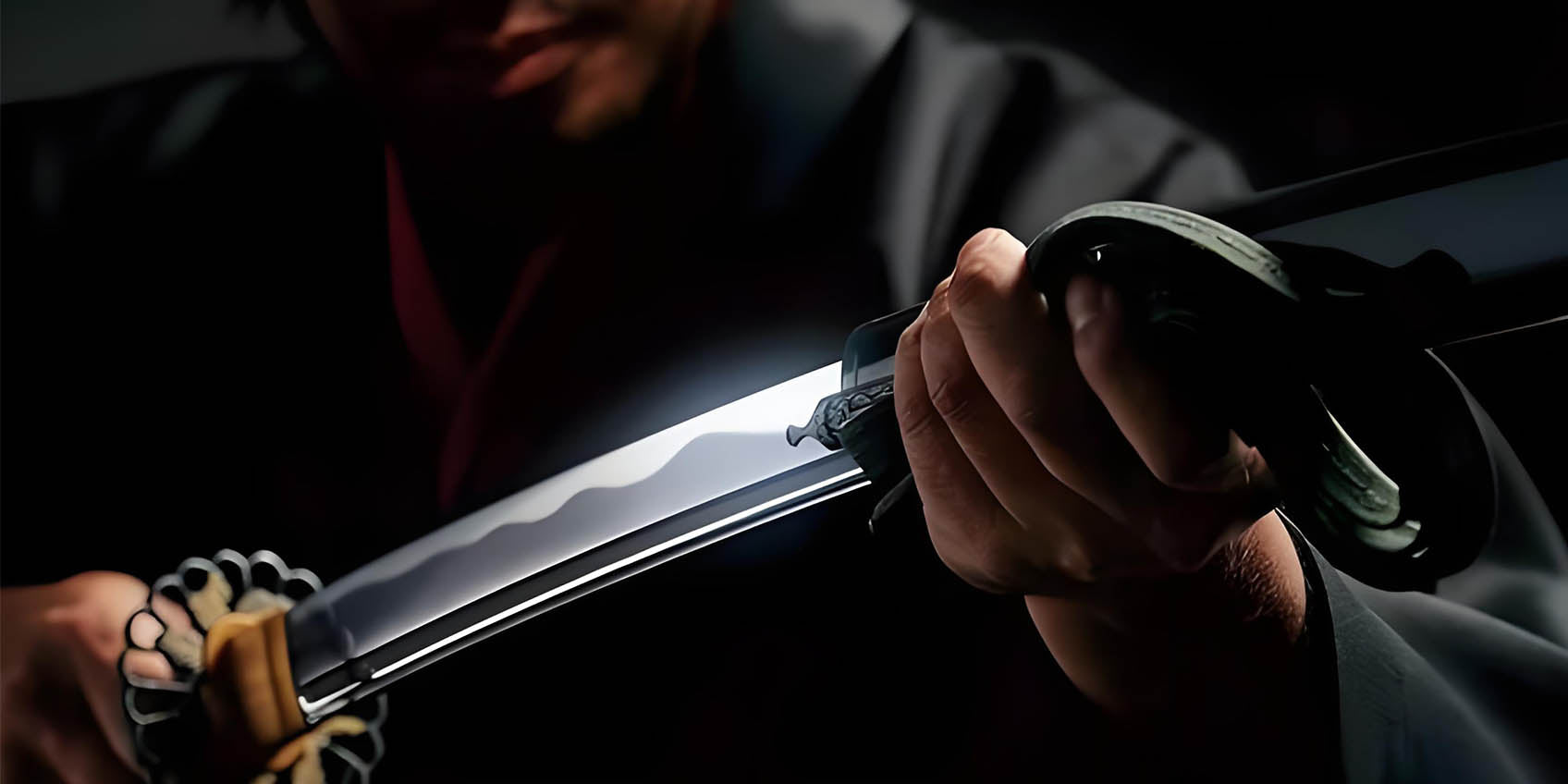Maintaining Swords: Guide to Blade Care Techniques

Once you have acquired a beloved japanese sword, how should you maintain it? Proper maintenance not only extends the sword's lifespan but also preserves its unique aesthetic value. Below are key maintenance steps and techniques to help you effectively manage and protect your japanese sword.
Step One: Prepare Tools
Before beginning maintenance on your samurai sword, ensure you have the following essential tools ready:
- Powder ball (for removing rust)
- Eyelet remover (for removing eyelets)
- Choji oil (blade oil)
- Cotton cloth
- Clean paper
Optional tools include sword pillows and bamboo skewers (substitute with disposable chopsticks).

Step Two: Remove Eyelets
1. Remove Eyelets: Eyelets are typically made from materials like bamboo, cow horn, or ivory and are used to secure the sword. When dismantling, carefully observe the size and orientation of the eyelet. Start pushing gently from the smaller end to avoid damage.
2. Disassemble the Handle: Be cautious when disassembling the handle to prevent accidental injury from the sharp blade. Firmly grip the handle with your right hand and strike the bottom with moderate force using your left fist. You will hear a crisp metallic sound as the tang and hilt components collide, indicating successful separation. The tang will then easily slide out, held by pinching with two fingers of your left hand.
Step Three: Applying Powder
3. Apply Powder: Use the powder ball to lightly tap the sword's surface. The powder typically contains animal bone powder and very fine abrasive stone powder to remove old oil stains.

Step Four: Remove Powder
4. Wipe Off Powder: Use clean paper to gently wipe the sword's surface in one direction to avoid scratches. Repeat this process several times until the sword's surface is clean and smooth.
Step Five: Admire the Sword
5. Inspect and Admire: After cleaning off the oil stains, carefully examine the sword for any damage. Use a light source to inspect details like the blade pattern and temper line.
Step Six: Oil Application
6. Apply Oil: Pour a small amount of choji oil onto a piece of cotton cloth and evenly spread it over the sword's surface. Let the oil dry and then use clean paper to wipe off any excess oil to prevent rusting.
Step Seven: Reapply Powder
7. Reapply Powder: If necessary, lightly tap the sword with powder once again and use clean paper to remove excess powder to enhance the sword's luster.
Step Eight: Handle Installation
8. Reinstall the Handle: Install the habaki and handle components in sequence, ensuring the tang is correctly inserted into the handle. Secure the handle by inserting the eyelet and using a small hammer to fix it in place.

Step Nine: Storing the Sword
9. Store the Sword: When sheathing the sword, ensure the blade edge faces upwards and handle the sword calmly to avoid any accidental damage from contact with the scabbard.
Conclusion
The advancement of modern culture and personalized demands has diversified the design of samurai swords. Traditional craftsmen preserve classic designs while integrating modern elements and personalized requirements. Advances in manufacturing technology and global influences have expanded material choices beyond traditional tamahagane to include stainless steel, high carbon steel, and even alloy materials. These new materials not only enhance blade durability and cutting capability but also provide craftsmen with greater creative possibilities to meet diverse customer needs and aesthetic preferences.
Different custom materials and accessories require specific maintenance methods to ensure their long-term durability and optimal appearance. For instance, stainless steel coolkatana need regular cleaning and rust prevention treatments, while high carbon steel blades require special care to avoid moisture and regular anti-corrosion treatments. Craftsmen provide tailored maintenance advice based on material characteristics and customer needs during the design and production process, ensuring that every katana maintains its best condition and unique charm.
Our shop offers a wide range of customized services
At some events, fans demonstrate their swordsmanship skills, paying tribute to anime's legendary battles. Conventions even hold swordsmanship competitions, letting enthusiasts showcase their passion and creativity with these iconic weapons. Certain anime weapons hold special significance for fans, influencing anime swordsmanship and sparking interest in related merchandise. Celebrations at various anime events further boost their popularity. These weapons symbolize strength and courage, leaving a lasting mark on the anime world.

